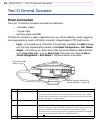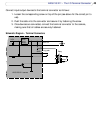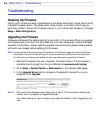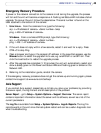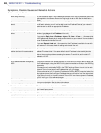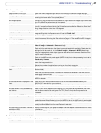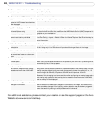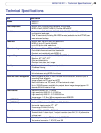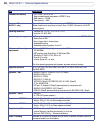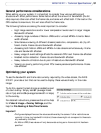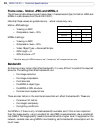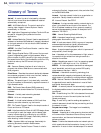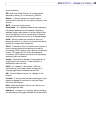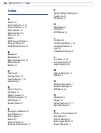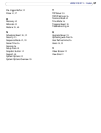
54
AXIS 210/211 - Glossary of Terms
ActiveX - A control (or set of rules) used by a browser.
ActiveX controls are often downloaded and installed
automatically as required.
AMC - AXIS Media Control. The control required for
viewing video images in Internet Explorer. Installs
automatically on first use.
API - Application Programming Interface. The Axis API can
be used for integrating Axis products into other
applications.
ARP - Address Resolution Protocol. Used to associate an IP
address to a hardware MAC address. A request is broadcast
on the local network to find out what the MAC address is
for the IP address.
ARTPEC - Axis Real Time Picture Encoder - used for video
image compression.
CCD - Charge Coupled Device. CCD is one of the two main
types of image sensors used in digital cameras. When a
picture is taken, the CCD is struck by light coming through
the camera’s lens. Each of the thousands or millions of tiny
pixels that make up the CCD convert this light into
electrons.
CGI - Common Gateway Interface. A set of rules (or a
program) that allows a Web Server to communicate with
other programs.
Client/Server - Describes the network relationship between
two computer programs in which one, the client, makes a
service request from another - the server.
DC-Iris - This special type of iris is electrically controlled
by the Axis camera, to automatically regulate the amount of
light allowed to enter.
DNS - The Domain Name System (DNS) locates and
translates Internet domain names into IP (Internet Protocol)
addresses.
Ethernet - A widely used networking standard.
ETRAX - Axis' own microprocessor.
Firewall - A virtual barrier between a LAN (Local Area
Network) and other networks, e.g. the Internet.
FTP - File Transfer Protocol. Used for the simple transfer of
files to and from an FTP-server.
HAD - Hole Accumulation Diode. A HAD CCD design allows
for more light to reach the imager, which reduces video
noise to improve signal-to-noise ratio by up to 6dB (2x
better than a standard CCD imager). Particularly effective
when shooting in dark situations.
HTML - Hypertext Mark-up Language. Used widely for
authoring documents viewed in web browsers.
HTTP - Hypertext Transfer Protocol. The set of rules for
exchanging files (text, images, sound, video, and other files)
on the World Wide Web.
Intranet - A private network limited to an organization or
corporation. Usually closed to external traffic.
IP - Internet-Protocol. See TCP/IP.
IP address - A unique number used by a network device, to
allow it to be identified and found on the network. The
32-bit IP address is made up of four groups (or quads) of
decimal digits separated by periods. An example of an IP
address is: 192.168.0.1
ISMA - Internet Streaming Media Alliance
JPEG - A standard image format, used widely for
photographs. Also known as JPG.
LAN - A local area network (LAN) is a group of computers
and associated devices that typically share common
resources within a limited geographical area.
Linux - A popular operating system, which is “open source”
and practically free of charge.
Lux - A standard unit for the measurement of light, where 1
Lux equals the light emitted from a single candle at a
distance of one meter.
Mbit/s - Megabits per second. A unit for measuring speeds
in networks. A LAN might run at 10 or 100 Mbit/s.
MPEG-4 - A video compression standard that makes good
use of bandwidth, and which can provide DVD-quality
video streams at less than 1 Mbit/s.
Multicast - A bandwidth-conserving technology that
reduces bandwidth usage by simultaneously delivering a
single stream of information to multiple network recipients.
NTSC - National Television Standards Committee. NTSC is
the standard format used for televisions in most of North
and Central America, and Japan.
NWAY - A network protocol that automatically negotiates
the highest possible common transmission speed between
two devices.
PAL - Phase Altering Line. PAL is the standard format used
for televisions in most of the world (other than the US,
Canada, and Japan).
Ping - A small utility used for sending data packets to
network resources to check that they are working and that
the network is intact.
Pre/post alarm image - The images from immediately
before and after an alarm.
Protocol - A special set of rules governing how two entities
will communicate. Protocols are found at many levels of
communication, and there are hardware protocols and
software protocols.
Router - A device that determines the next network point to
which a packet should be forwarded on its way to its final
destination. A router is often included as part of a network
Glossary of Terms




